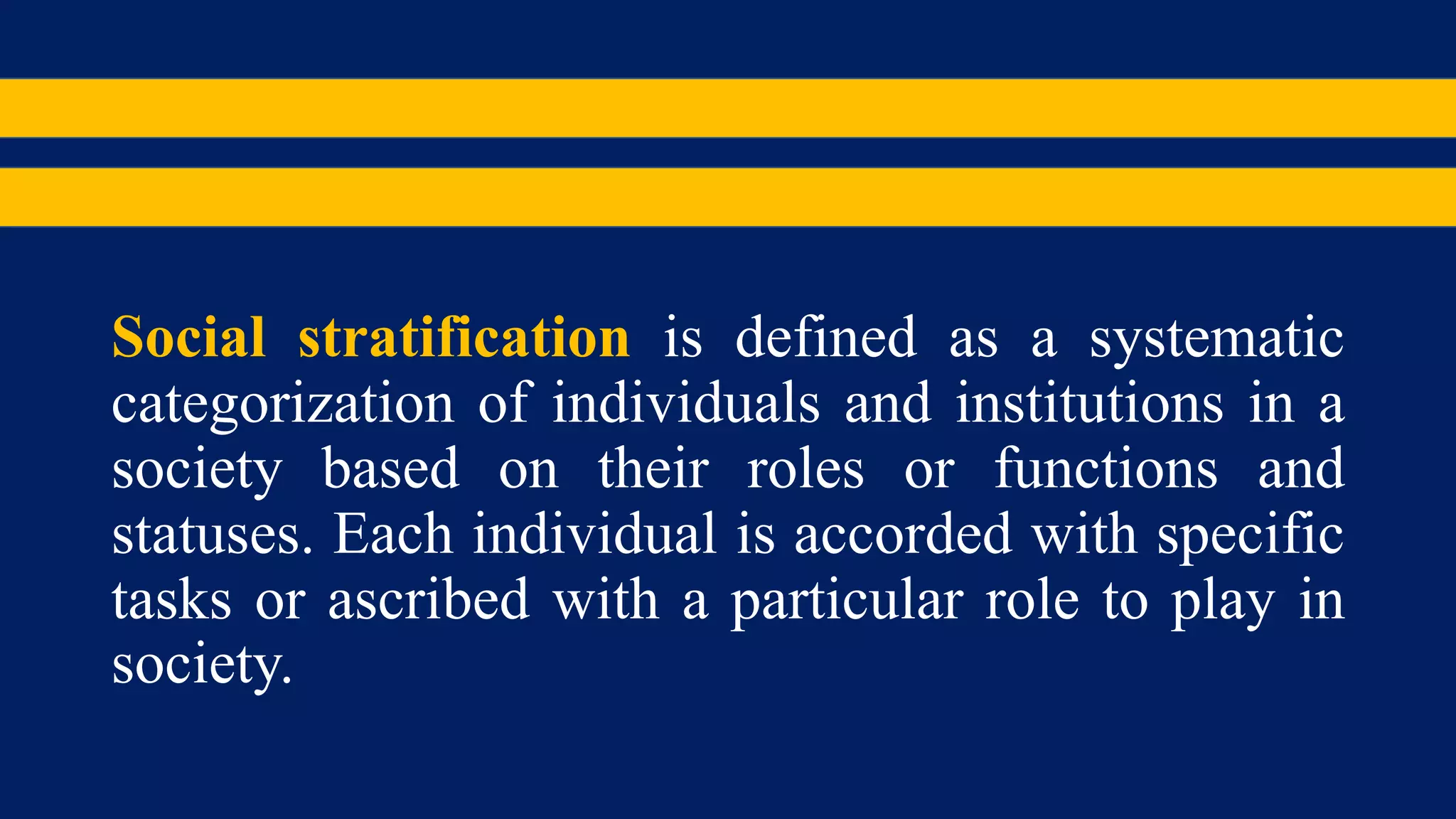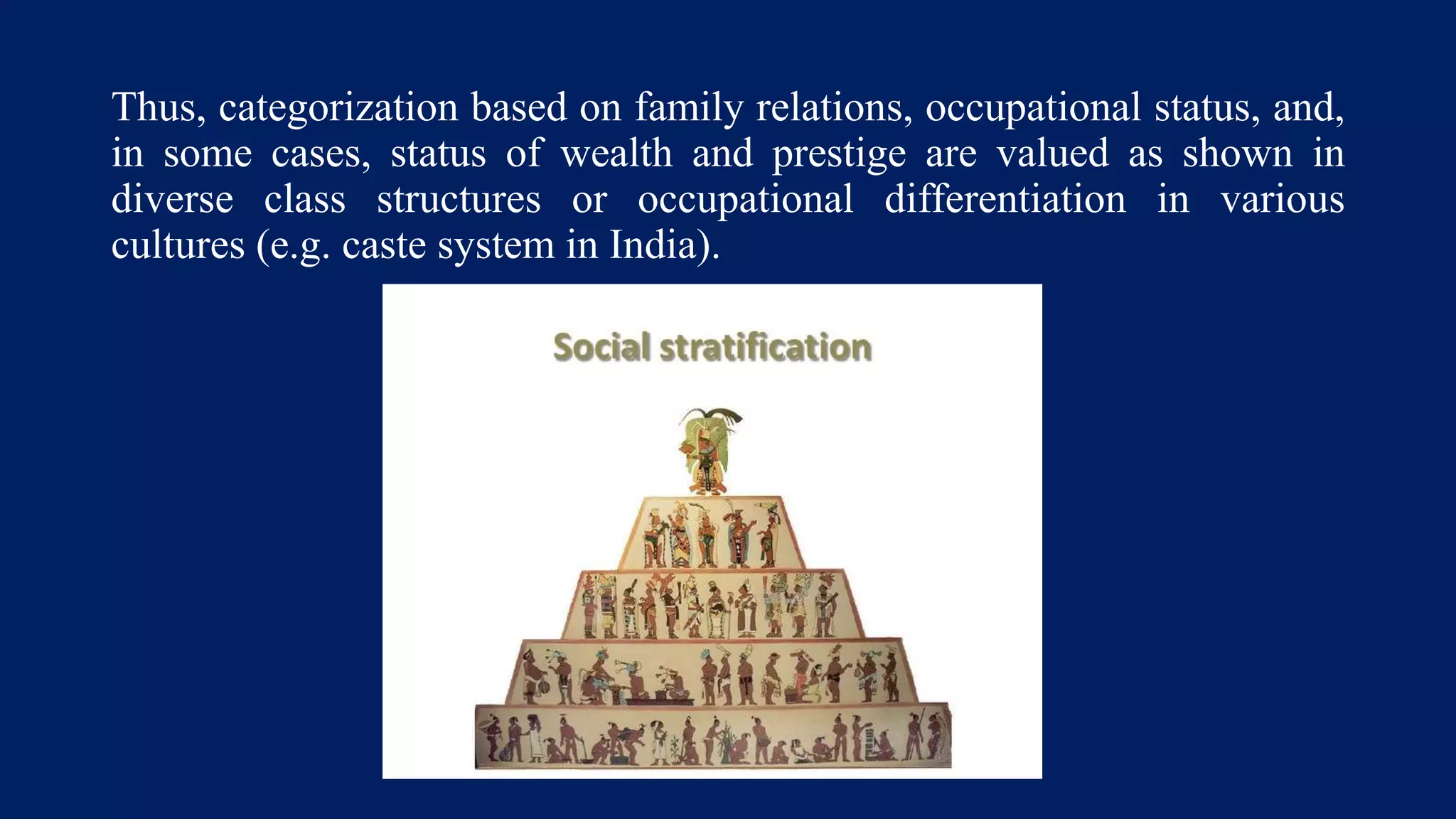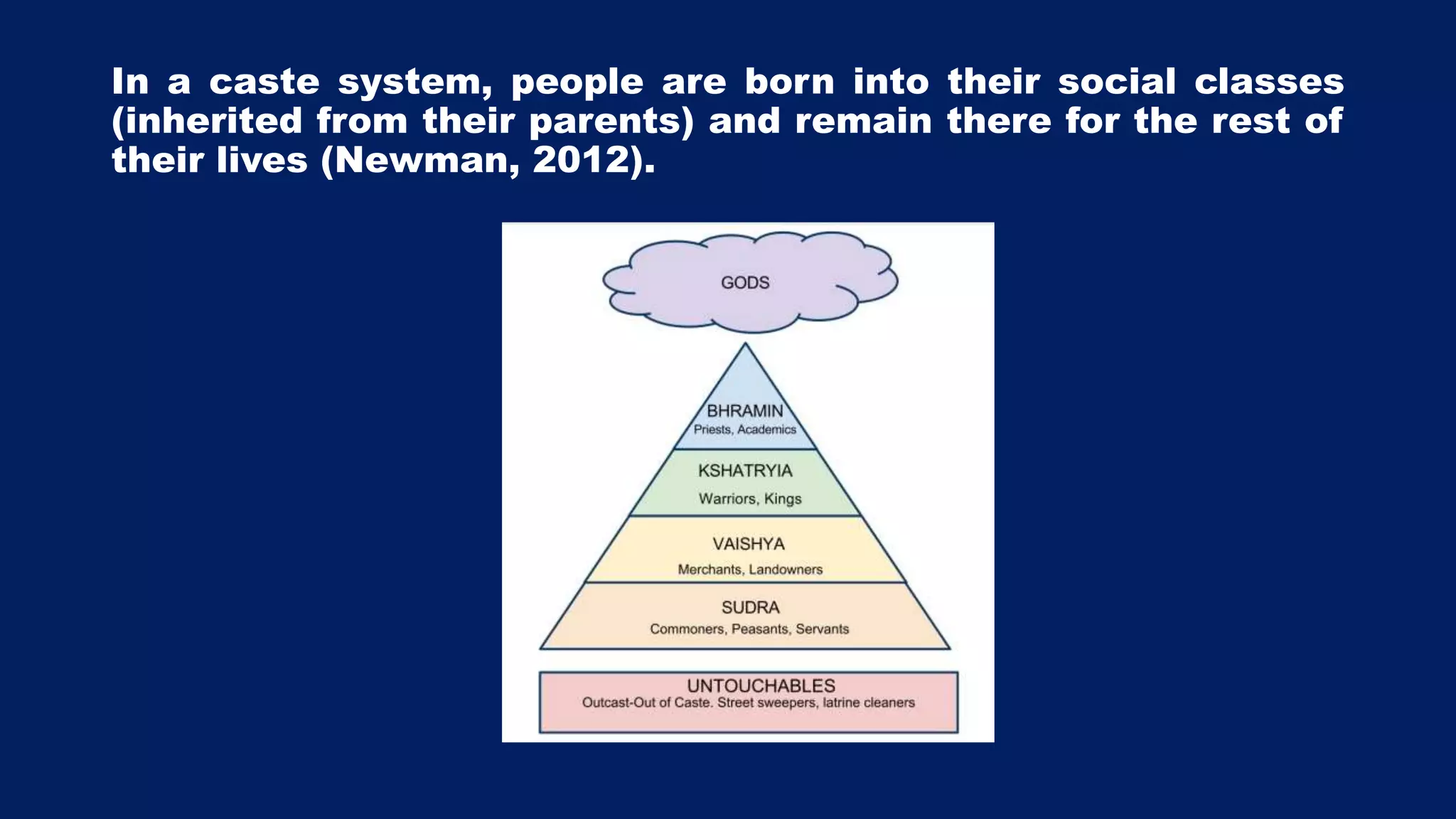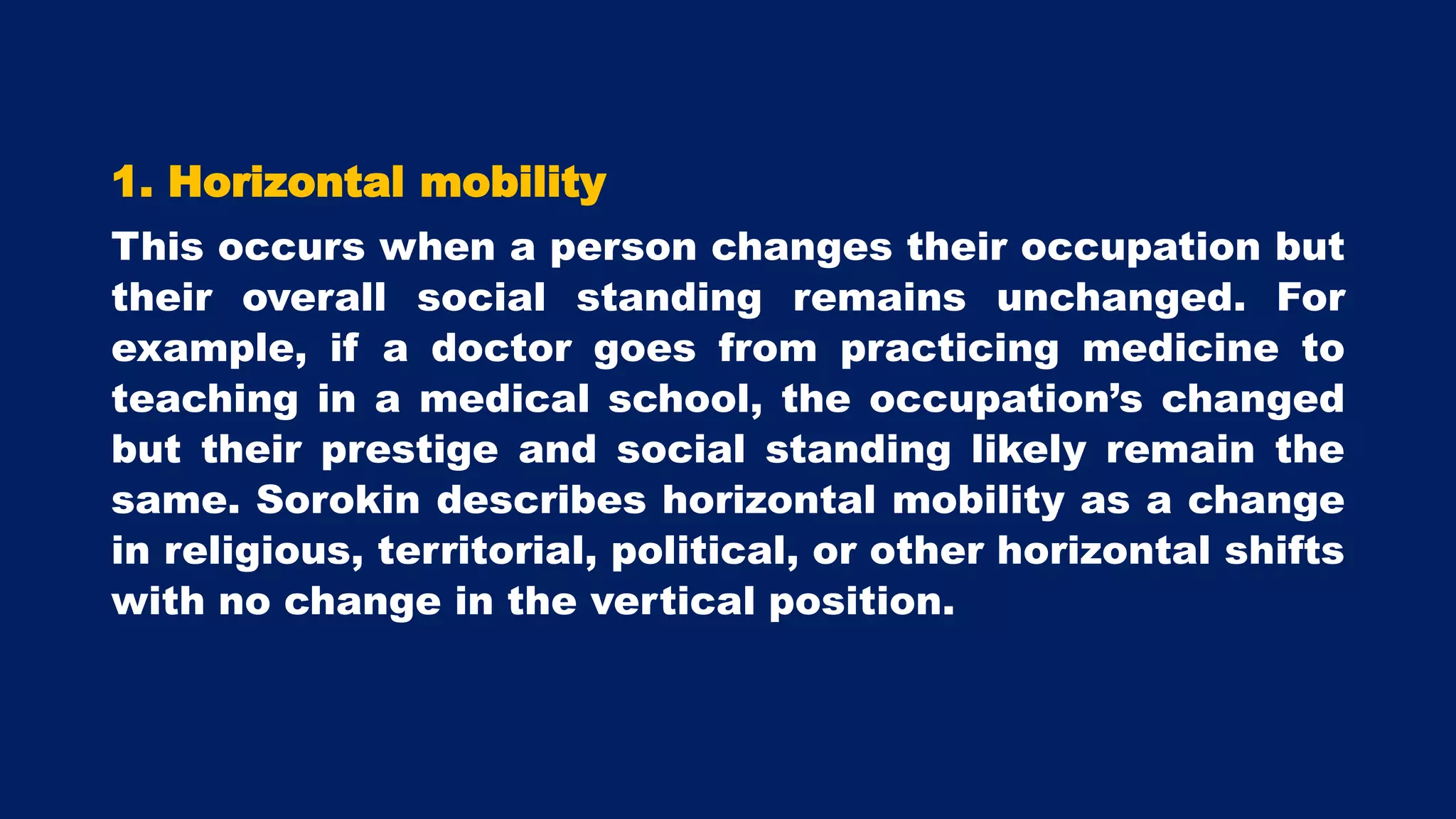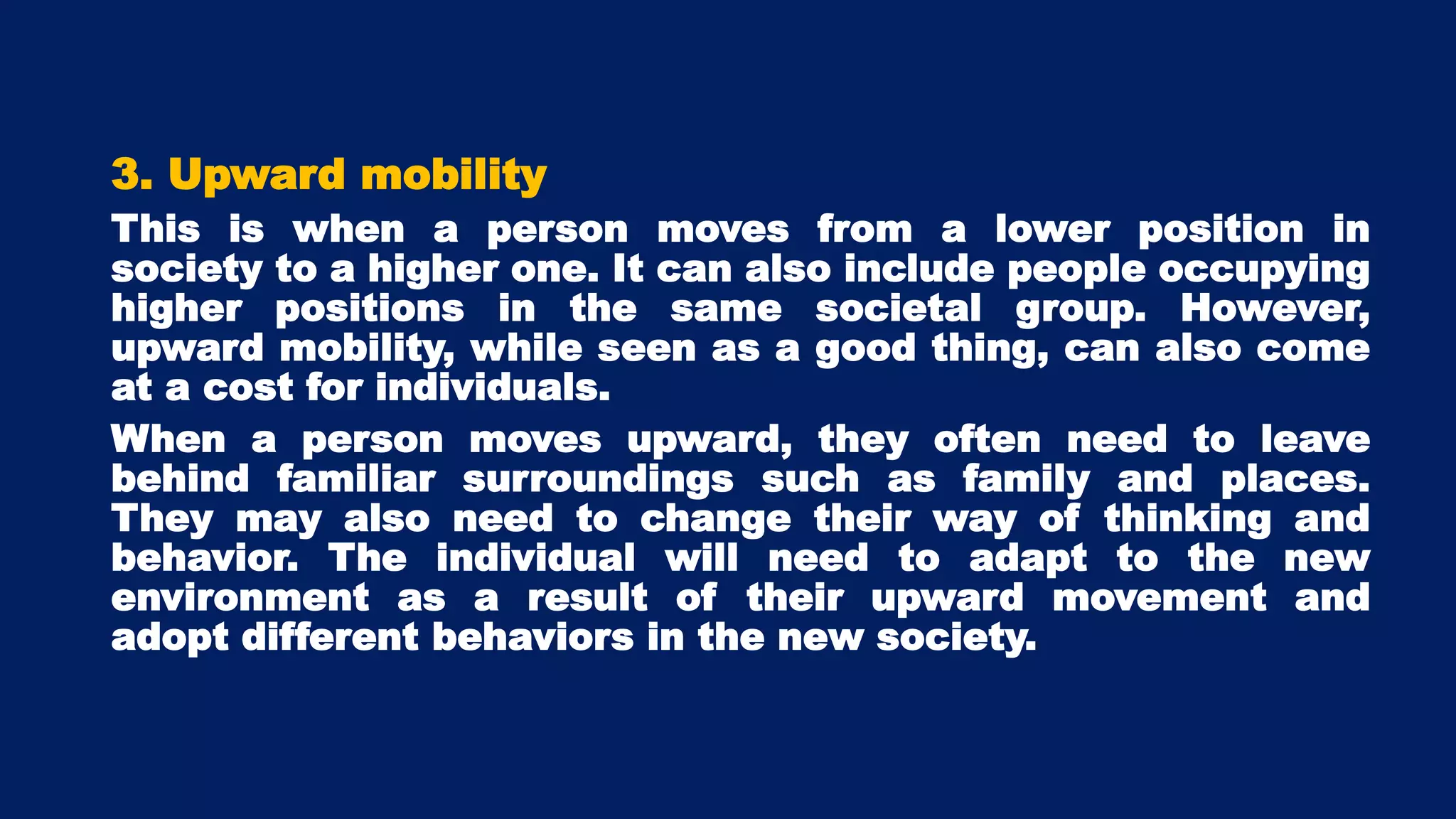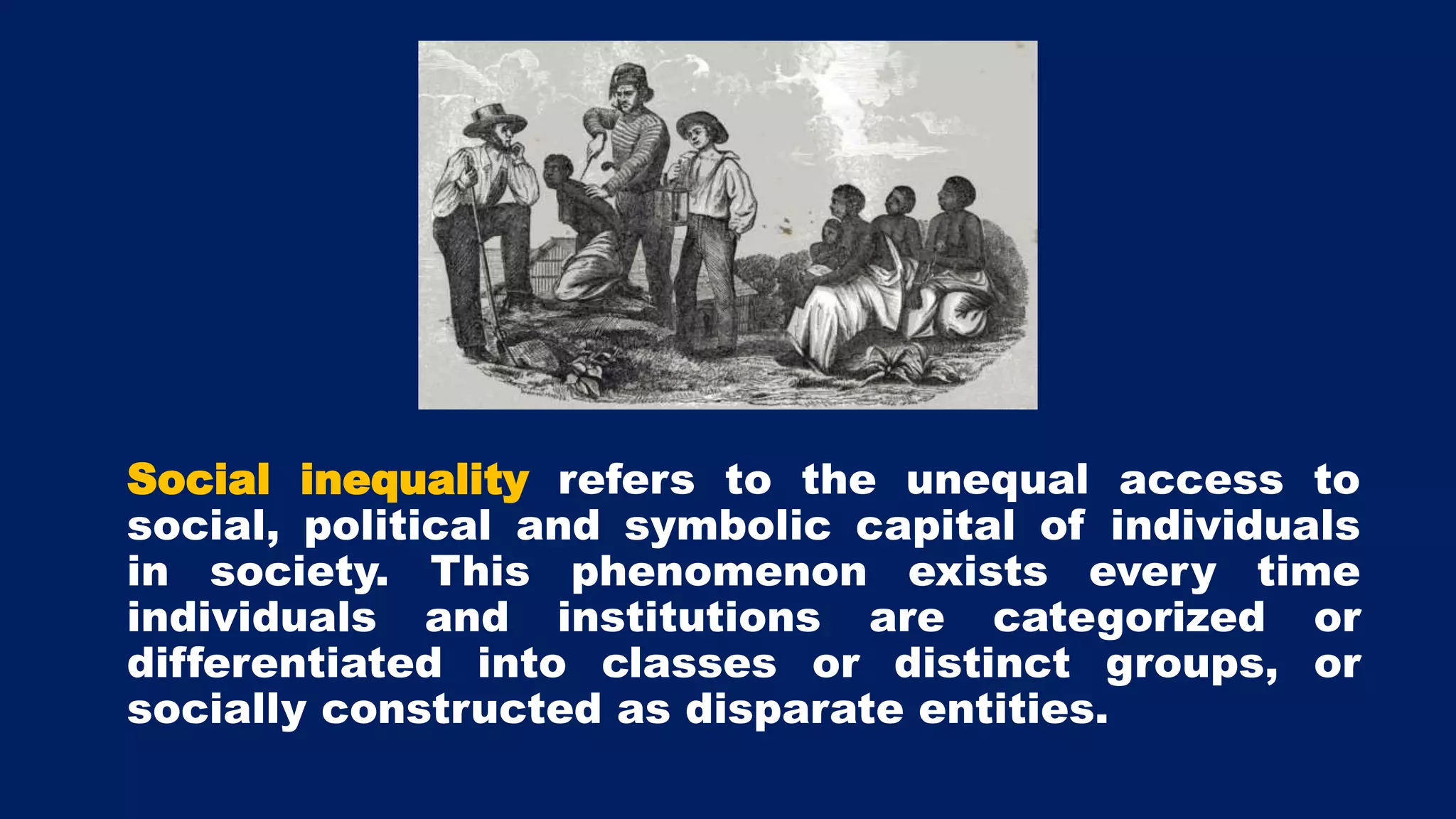This document discusses social stratification and social mobility. It defines social stratification as the systematic categorization of individuals and institutions in a society based on roles, functions, statuses, family relations and occupational status. Political stratification is similarly defined based on power relations and status. Social desirables like power, wealth and prestige are discussed. The document also covers social mobility, open and closed societies, types of social mobility including horizontal, vertical, upward, downward, inter-generational and intra-generational mobility. It discusses how social inequality is produced through gender stereotyping, sexism, and racism.





